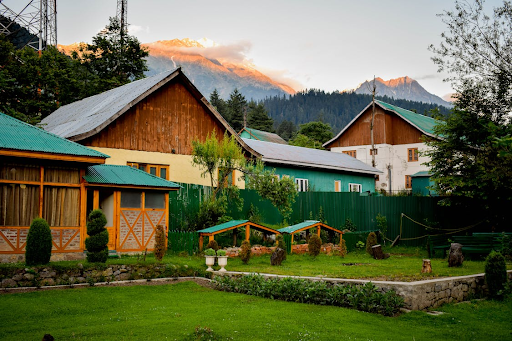What is a garden to you? A place to relax perhaps, an area to grow vegetables or even enjoy unique fixtures like a well-maintained koi pond. All of that can be a wonderful goal to envision, but the truth is that a garden is a slice of nature. It would love nothing more than to grow unimpeded, to let weeds and moss spiral up your building, to create a small home for wildlife and to subvert your best-laid plans.
It’s unlikely you’ll be too happy with that. That being said, if nature has its own logic, what kind of logic should we implement in our own garden space? How do we successfully turn a slice of nature into an extended part of our own homes, tamed, and functional for a variety of uses?
It’s not always clear. After all, gardens are not necessarily alike, one might cover entire stately grounds, others might be singular, narrow and steep. In this guide, we’ll give you some general principles you can use to understand the logic of your garden, and then optimize it for yourself in the new year:
Consider The Navigable Route
Ultimately, being able to walk through a garden is essential. No matter how large the space is, blocked-off zones only rob you of navigable space, and when you understand the route you can then set the dimensions of other implements. For example, installing paving stones into your garden can allow you to place vegetable gardens, sheds or child playframes where the space might be found, or allow a simple route around the side of your garden to the back door of your house. This, in itself, can give you the comfort you’re looking for.
Plan For Seasonal Needs
You can begin by assessing your garden’s environment, considering factors like sunlight, soil quality, and climate. Clearly define the purpose of your garden—whether it’s for relaxation, entertainment, or growing specific plants. From there, you can define how you’ll alter your garden year-round. Room for a chiminea or a larger outdoor heater can be used in the summer and winter respectively. You might also use evergreen plants, or plan to store your garden furniture (or cover it during the winter period. A porch or overhang can help prevent weather impact.
Decorative Elements & Function
You get to decide what your garden prioritizes, and how it strikes a balance between function and design. Some people love to landscape their garden, to implement flower arrangements, lanterns, ponds and water features. Others prefer to just pave the garden, install a hot tub, place some nice furniture, and relax. Finding the balance is important. It’s also important to understand your main strengths, perhaps a large tree that needs regular pruning, perhaps a hedgerow, or even privacy fences that help block off and border the space. Set three main priorities, and consider what’s most important to you. It might be a water feature, it might be safe fences, and then you can plan around that. It will give you dimensions for your green space, path and other parameters.
With this advice, you’re certain to understand and implement the logic of good garden design.

